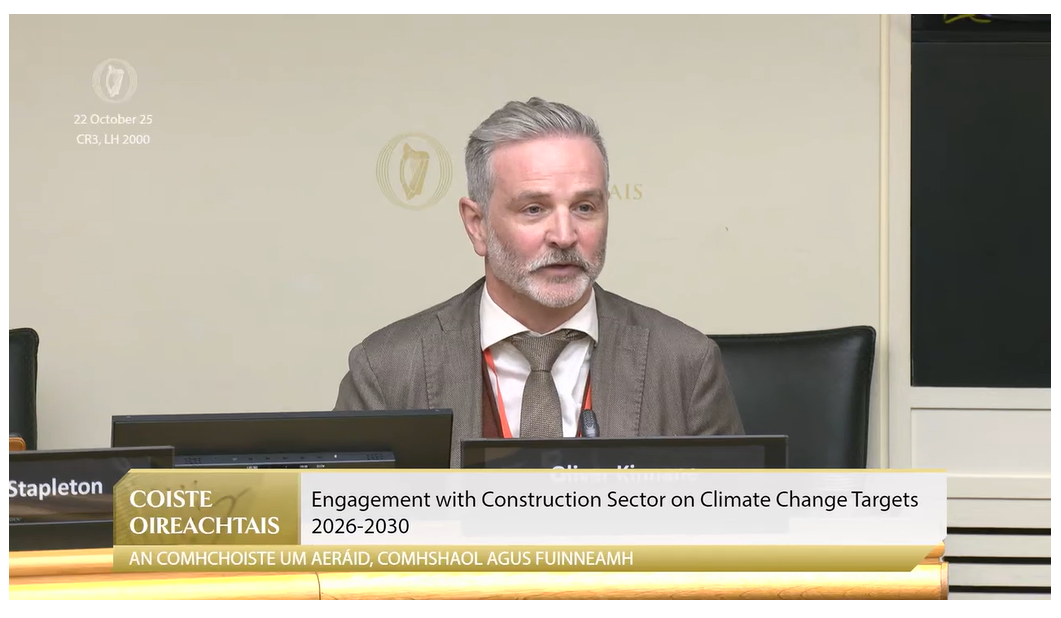Retrofitting derelict properties key to cutting carbon emissions, says Oliver Kinnane
Wednesday, 22 October, 2025
Share

Retrofitting 100,000 of Ireland's vacant homes by 2030 could cut embodied carbon-related emissions by over one million tonnes (1Mt), Oliver Kinnane - Earth Institute Climate Fellow and Head of School at UCD School of Architecture, Planning and Environmental Policy has said.
Speaking before the Joint Oireachtas Committee on Climate, Environment and Energy today, he said that reusing buildings in our cities, towns and villages would add to the housing stock in areas that already have infrastructure and services - while reducing embodied carbon.
The reuse of existing buildings in existing cities, towns and villages is an opportunity to add to the housing stock where existing structures, infrastructure and services are already provided, saving more than 30% additional embodied carbon.
However, he added that regulatory barriers mean that the process of converting older properties can be cumbersome – this includes separate processes for planning, conservation, fire safety and disability access.
These administrative systems need to be streamlined to support building owners and reduce costs, he said, while pointing out that the uptake of grant support is also low. He suggested that these support systems need to be revised to reduce the administrative burden and upfront costs for the building owner.
The Lead Academic at UCD's Building in a Climate Emergency Research Group also highlighted that savings could also be made in the commercial sector "where the demolition of existing buildings and replacement with new claimed more sustainable buildings is common".
"Fifteen per cent of our commercial buildings nationally are estimated to be vacant and these buildings should be reused as a priority," he said.
In addition, he told the Committee members that Ireland is projected to overshoot its carbon budgets despite progress having been made in improving building efficiency. As he explained, this is because "the operation of the built environment sector will slightly exceed its first carbon budget period (2021-25) but is forecast to overshoot its second carbon budget (for the period 2025-2030) by 20 to 25%.
You can watch the full hearing (opens in a new window)here.